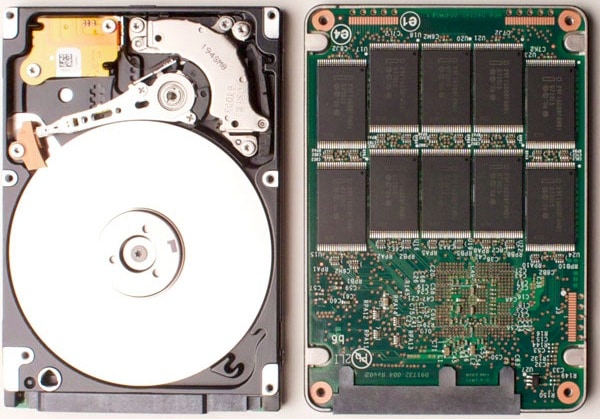It seems that whenever a new technology gets introduced into the hosting industry there’s a fair share of providers who choose to make claims about the use of this new technology without actually integrating it into their infrastructure. Such has been the case as SSD’s first got introduced into the hosting marketplace. SSD’s offer a tremendous amount of improvement over the traditional HDD’s – and as the popularity and common knowledge about SSD’s increases we start to run into a variety of new marketing terms such as “SSD-enhanced” and “SSD-powered” hosting. But are these the real thing? Are these actual hosting services that give you access to actual SSD storage space?
So let’s dive into what’s really going on here. First off let’s quickly go over what exactly an SSD is. An SSD is in all purposes a new version of a hard drive, however SSDs have no moving mechanical components. This distinguishes them from traditional electromechanical magnetic disks such as hard disk drives (HDDs), which contain spinning disks and movable read/write heads. Since there are no moving mechanical parts, and no spinning of a disk required, you can read and write data to/from an SSD significantly faster than you could from an HDD.

With that covered, let’s take a look at how SSD’s are being utilized in the hosting world. True SSD hosting will utilize strictly SSD drives, storing all of their data on them. This will often times be your most expensive solution however it will produce the most performance gains over a standard HDD setup.
Then you have something called “SSD enhanced servers” or “SSD Cached“. These types of setups store “hot” data (data frequently accessed by the server) onto SSD drives; while less frequently accessed data is stored on standard HDD drives. Often times these companies will host the core OS and/or their databases on SSD drives; leaving the remainder of your images, videos, and files to be served from a standard HDD.
Now here’s the big problem. If you’re on a shared hosting environment there’s really no way to tell exactly what your host is using. What makes this even worse is that some hosting companies take advantage of this and list their hosting services as “SSD hosting” – without giving you any transparency to see just how they are utilizing SSD’s in their infrastructure. You can try Linfo – a PHP script designed to display your system info and hardware information – however the majority of shared hosting platforms will block the functions required to run this script. It doesn’t hurt to try though.
Ultimately though you should trust your host enough to believe what they state – otherwise you probably shouldn’t be hosting with them at all. Simply ask them exactly how they utilize SSD storage throughout their plans and pay attention to the answers. Vague answers will often mean that they are not offering true SSD hosting.

Excellent advice! I’ve been seeing a lot of hosts using the term “SSD enhanced”. I agree that it’s important to talk to talk to your service provider about how they actually implement this technology.